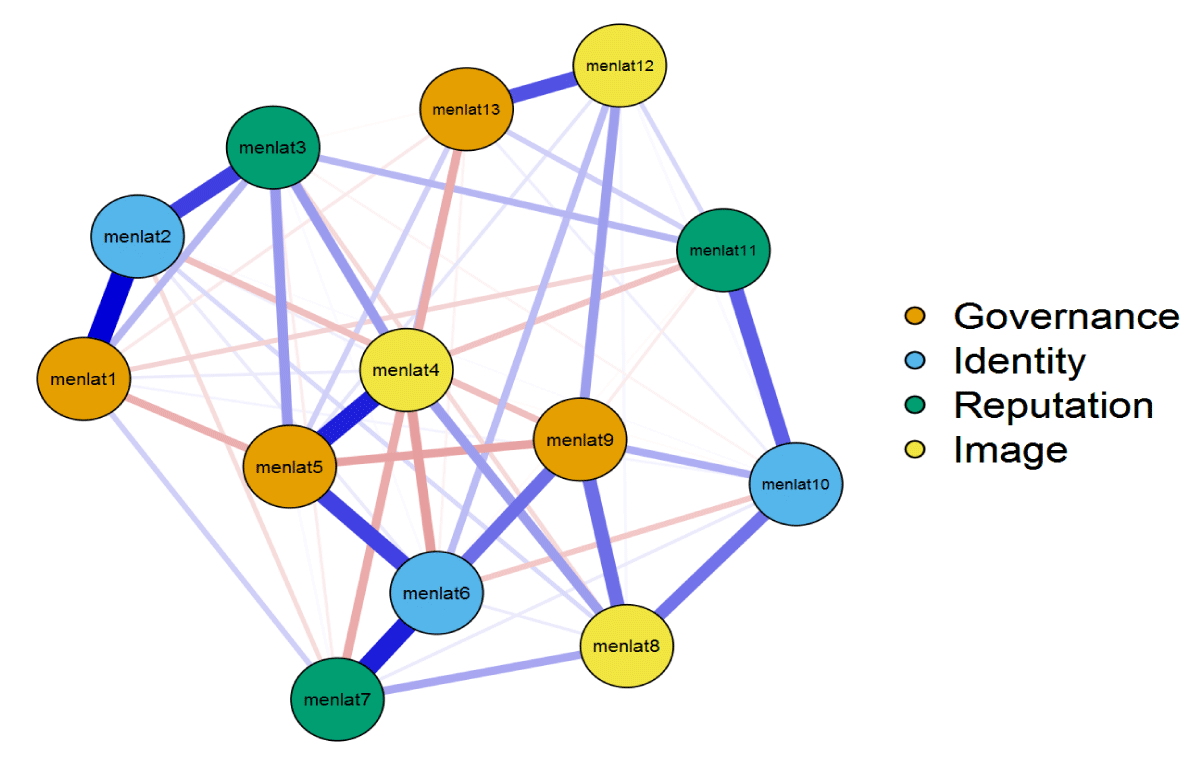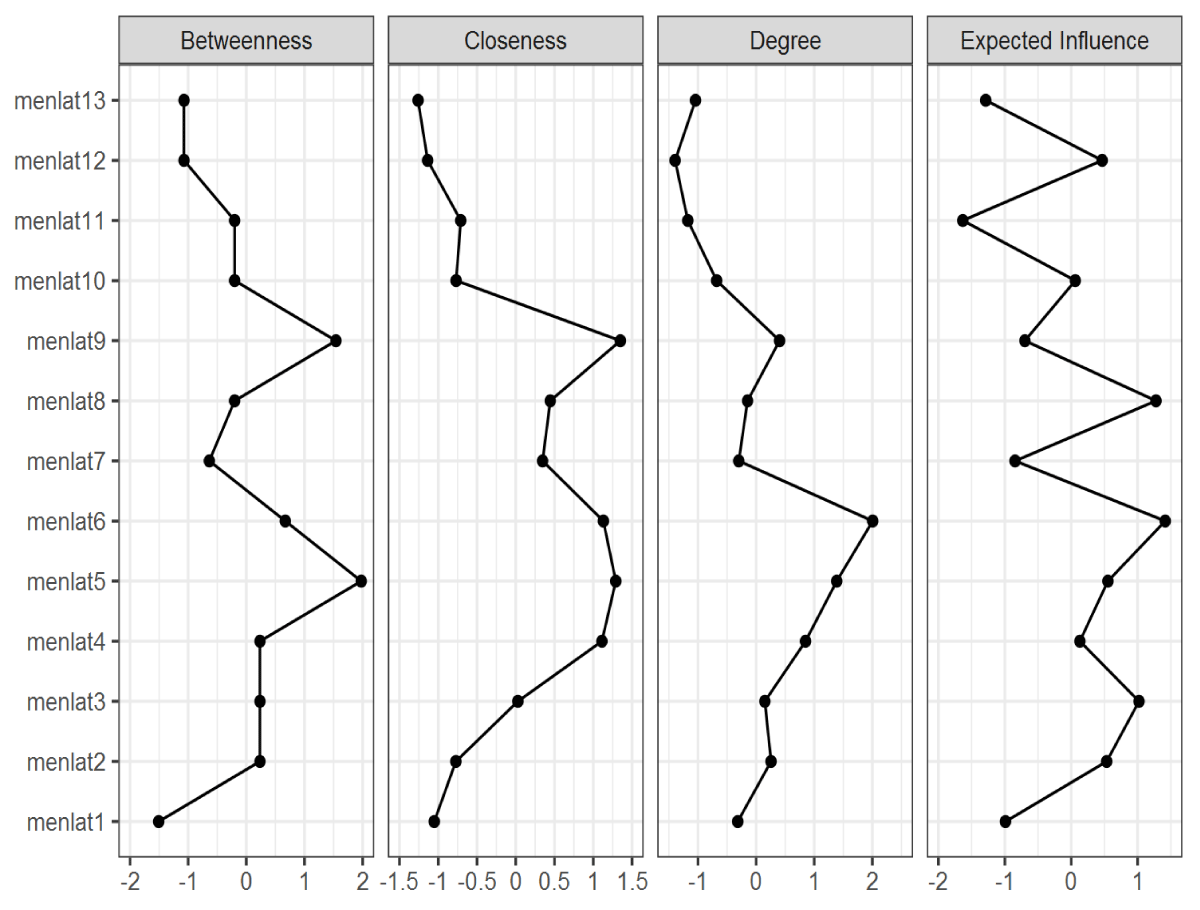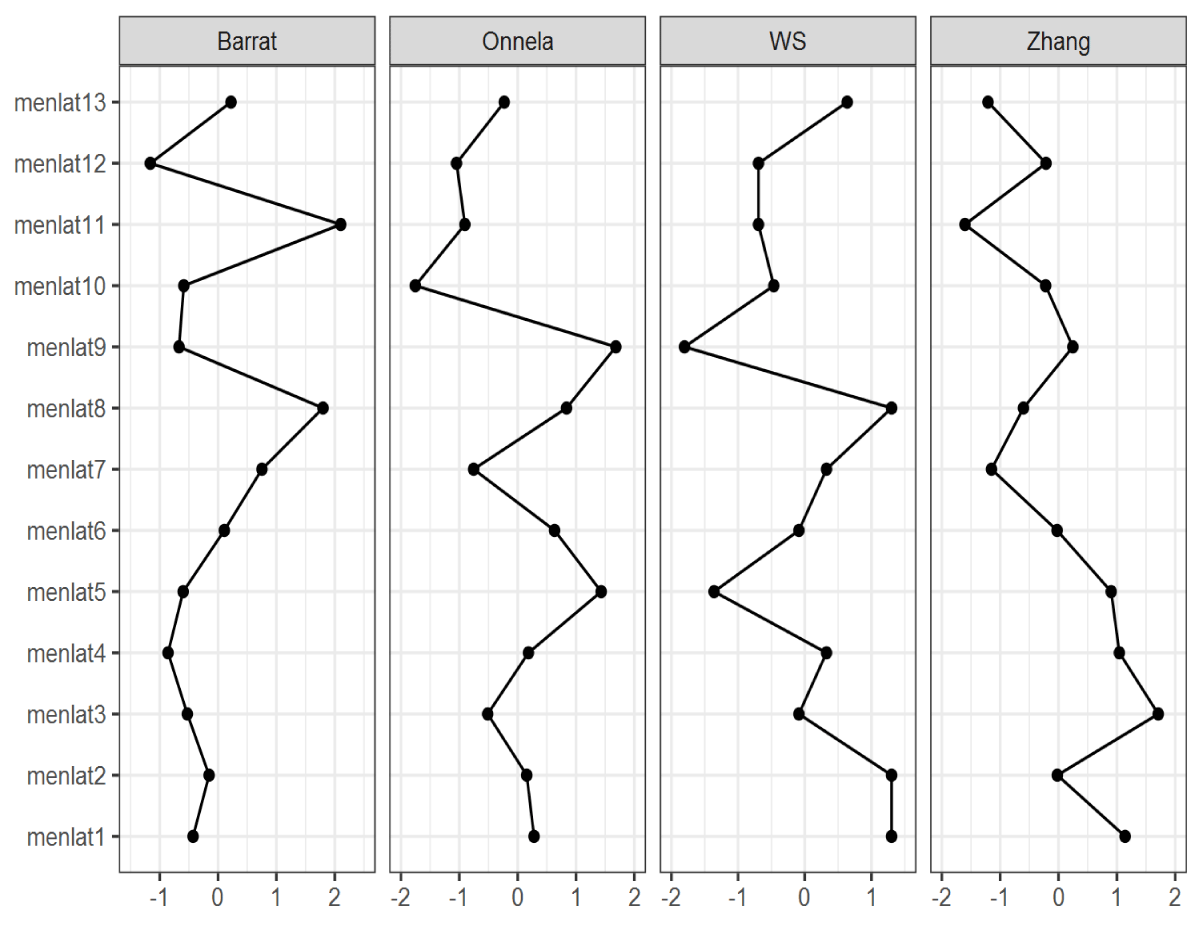More Information
Submitted: July 07, 2022 | Approved: April 03, 2023 | Published: April 04, 2023
How to cite this article: Cordoba VHM, Lirios CG, Rodriguez EBV, Valencia OIC, Bund AV. Training networks preparation for the era of COVID-19. J Community Med Health Solut. 2023; 4: 023-027.
DOI: 10.29328/journal.jcmhs.1001030
Copyright License: © 2023 Cordoba VHM, et al. This is an open access article distributed under the Creative Commons Attribution License, which permits unrestricted use, distribution, and reproduction in any medium, provided the original work is properly cited.
Keywords: Capital; Intellectual; Formation; Diffuse; Model
Training networks preparation for the era of COVID-19
Victor Hugo Meriño Cordoba1, Cruz Garcia Lirios2, Elisa Bertha Velazquez Rodriguez2, Oscar Igor Carreon Valencia3 and Arger Verstapp Bund4*
1Luis Amigo Catholic University, Colombia
2Autonomous Mexico State University, Mexico
3Center for Political and Social Studies, Mexico
4Department Economy, Sonora Technological, Navojoa, México
*Address for Correspondence: Arger Verstapp Bund, Department Economy, Sonora Technological, Navojoa, México, Email: [email protected]
In administrative and economic science, factor analysis models are essential for their explanatory capacity of institutional responses to risk events. The objective of this document was to contrast a model that explains the emergence of corporate governance dimensions in the face of the pandemic. An exploratory study was carried out based on a systematic review of the literature from 2020 to 2023, considering the search by keywords in Google scholar and Microsoft academic, as well as the judges from a public university in the center of Mexico. The results show that corporate identity explains the university’s response to the pandemic. In relation to the state of the art, the scope and limits of the model are discussed in other proposals.
Until April 2023, after two years, the pandemic has killed 6 million [1]. The public health system implemented distancing and confinement policies that impacted educational systems [2]. The transition from the traditional classroom to the virtual classroom supposes the emergence of an innovative link system between the academy and the labor market. The formation of intellectual capital in the virtual classroom supposes permissible risk gradients, although the relationships with the determinants anticipate risk scenarios. The analysis of the fuzzy logic of random events has revealed emerging entities such as university governance, corporate reputation, or professional training.
University governance, indicated by corporate identity, reputation, and image, predicts academic training [3]. Defined as a system of negotiation, consensus, and responsibility, university governance includes managers, producers, and disseminators of knowledge as stakeholders (García, et al. 2019). Corporate identity or sense of belonging is seen in the rational choice of belonging to a group. Corporate reputation refers to a community’s self-concept in the face of a risk event and the availability of resources. The corporate image defined as the future choice based on expectations of the abundance of resources and minimization of costs reflects university governance.
In the corporate governance structure, training, image, reputation, and identity are predominant factors in the management, production, and transfer of knowledge. Studies on corporate governance have shown that it is an emerging phenomenon [4]. The description of this process can be done from fuzzy logic. Knowledge managed, produced, and transferred reaches its goal when it is the product of academic, professional, and work training.
So far, in April 2023, it is known that the corporate reputation of Higher Education Institutions (IES) consists of the formation of human capital committed to the sociopolitical context of Mexico [5]. Corporate governance in its identity modality underlines the uses and customs that distinguish one university from others, considering its insertion into the local market. Fuzzy logic is a theoretical and empirical framework that allows for explaining the bifurcations of risk events such as the pandemic on corporate governance indicators.
Corporate identity, being related to the conflict between the parties due to emotions of belonging, undermines the external image [6]. An increase in agreements fosters inbred expectations. The curricula are oriented towards internal capacities and nullify academic competitiveness. The reputation associated with identity consists of the self-concept of the institution. If policies that favor university members increase, the self-concept of this academic community reduces its comparison with other institutions. Global or national indicators of institutional performance lose meaning when corporate reputation increases.
However, the external image of the university measured through the Program for International Student Assessment (PISA) contravenes corporate reputation and identity [7]. An increase in the results of the PISA test suggests a reduction in corporate reputation if its community is inbred. Conflicts between the inbred criteria of the university and the PISA test enhance reputation and identity but reduce corporate governance to an internal affair.
Instead, corporate governments that have a high identity, reputation, and identity manage strategic alliances with other institutions [8]. The mere interdisciplinary or multidisciplinary training derived from strategic alliances between universities and companies suggests open corporate governance. The absence of international alliances and tests, as well as an unknown ranking of the university, reflects an inbred corporate government.
Are there significant differences between the relationships of the categories related to government, identity, reputation, image, and training with respect to the observations made in this study, considering the COVID-19 era?
The premises that guide this work suggest: The pandemic and the containment and mitigation policies, which focused on the distancing and confinement of people, affected the corporate governance of universities [9]. Universities and companies formed strategic alliances around the management, production, and transfer of knowledge; Identity, reputation, and corporate image increased, influencing academic, professional, and work training. The policies of immunization, deconfinement and return to classrooms affect the corporate governance of universities [10]. The identity and reputation increased as a reaction to face-to-face classroom educational policies, but the corporate image was reduced due to the conflict between political and social actors.
Exploratory and descriptive work was carried out with a selection of sources indexed to international repositories, considering the search by keywords; Governance, identity, reputation, image, and academic training in Google Scholar and Microsoft Academic, considering the period that the pandemic takes from December 2020 to April 2023 (Table 1).
| Table 1: Sample Descriptive. | |||||
| Government | Identity | Reputation | Image | Training | |
| 6 | 5 | 6 | 5 | 4 | |
| Microsoft | 4 | 7 | 5 | 7 | 7 |
| Source: Prepared with study data | |||||
A total of 56 abstracts were selected to establish the relationships between the categories. Based on a Delphi Inventory, expert judges on the topics rated the relationships between the summaries; considering 1 for training, 2 for identity, 3 for reputation, 4 for image, and 5 for corporate governance (Table 2).
| Table 2: Descriptive of the judges. | ||||
| Sex | Age | Doctorate | Antiquity | Entry |
| Male | 46 | Psychology | 20 | 30'892.00 |
| Feminine | 58 | Anthropology | 22 | 40'123.00 |
| Feminine | 49 | Pedagogy | 19 | 39'092.00 |
| Male | 62 | Sociology | 21 | 28'914.00 |
| Male | 50 | Management | 24 | 32'432.00 |
| Male | 55 | Economy | 18 | 29'645.00 |
| Feminine | 48 | Pedagogy | 17 | 31'784.00 |
|
|
||||
In three rounds, one qualifying, one feedback, and one reconsidering or reiterative, the judges evaluated and compared their assessments regarding the relationships between categories [11,12]. Six articles were selected in which corporate governance stands out as a configuration of identity, reputation, and image, but with an emphasis on academic training (Table 3).
| Table 3: Corporate governance studies: identity, reputation and image | |||||
| Year | Author | Literature | Phase | Division | Sample |
| 2019 | Hernandez, et al. | A | D | CBI | 260 |
| 2021 | Morales, et al. | A | G | CBS | 230 |
| 2021 | Ferr, et al. | D | D | CAD | 220 |
| 2021 | Garcia, et al. | A | D | CSH | 200 |
| 2020 | Sandoval, et al. | B. | P | CBI | 220 |
| 2022 | Carreon, et al. | A | G | CBS | 240 |
| Source: Prepared with study data; A: Literature that reported total positive and significant effects of management on the production and transfer of knowledge; B: Literature that reported total positive and spurious effects of management in the production and transfer of knowledge; C: Literature that reported total zero effects of management on the production and transfer of knowledge; Literature that reported total negative effects of management on the production and transfer of knowledge. Phase M: Management Phase; Phase P: Production Phase; Phase D: Diffusion Phase; CBI: Basic Sciences and Engineering; CBS: Biological and Health Sciences; CSH: Social Sciences and Humanities; CAD: Sciences and Arts for Design; CNI: Natural Sciences and Engineering; CCD: Communication Sciences and Design | |||||
Once the categories were established, the Corporate Governance Scale (EGC-18) was elaborated, considering the validity by judges and preliminary piloting with 100 students, following the protocol of confidentiality and anonymity (Table 4).
| Table 4: Operationalization of variables. | |||
| Definition | Indicators | Measurement | |
| Corporate governance | It refers to the internal and external concepts around the resources and capabilities of an institution in a risk scenario. | Identity, reputation, and image | The sum of scores related to corporate identity, reputation, and image |
| Corporate identity | It refers to the soft and internal factors of an organization in the face of a risk event. | Values, beliefs, perceptions, trust, empathy, emotions, solidarity | 0 = “Not desirable at all” to 5 = “Quite desirable” |
| Corporate reputation | It refers to the internal capacities of an institution in the face of a risky situation. | Skills, competencies, knowledge, intentions, strategies | 0 = “not at all likely” to 5 = “fairly likely” |
| Corporate image | It refers to the external concept of an organization facing a risk | Alliances, entrepreneurship, productivity, competitiveness, transparency | 0 = “I do not agree at all” to 5 = “I quite agree” |
| Source: Prepared with study data | |||
The instrument was sent to the institutional mail of the students. An informed consent form was attached, following the anonymity and confidentiality protocol. The data was captured in Excel and processed in JASP version 15 considering the distribution values and contrast of hypotheses of contingent relationships, as well as structural modeling, adjustment, and residual.
Figure 1 shows the values related to the non-parametric distribution, and contingency relationships between the categories evaluated by the judges in three rounds: qualifying, feedback, and reconsideration or reiteration. Distributions that allowed analysis of relationships between the variables due to the internal consistency of the scale are appreciated.
Figure 1: Network. Source: Elaborated with study data
Figure 2 shows the structure of relationships between the categories: Identity, reputation, and corporate image, explaining the configuration of corporate governance in the study literature. Corporate identity (RC1) was more identified by the judges’ evaluation regarding reputation and image. The finding is limited to the theory of corporate governance where identity is revealed as an underlying process of risk events that enhance the institution but reduce its image with respect to its training capabilities.
Figure 2: Centrality. Source: Elaborated with data study.
Figure 3 shows corporate reputation (RC2), which was configured from evaluations in which the judges determined the self-concept of the institution through the articles analyzed. A minor structure is appreciated with respect to identity, but more with respect to the image. The finding corroborates the theory of corporate governance. In a risk scenario such as the pandemic, institutions take care of their concept of themselves by synchronizing objectives, tasks, and goals. The corporate identity and reputation increase, but the image of the institution decreases due to its agenda of internal priorities.
Figure 3: Clustering. Source: Elaborated with data study. The Barrat, Onnela, WS & Zang coefficients measure the relationship between the central node with respect to the peripheral edges
The adjustment and residual parameters suggest the non-rejection of the null hypothesis regarding the significant differences between the categories subtracted from the literature with respect to the evaluations of expert judges in the themes.
The contribution of this work lies in the establishment of three dimensions: Identity, reputation, and image related to the corporate governance of a university in central Mexico. The identity dimension, alluding to the soft resources of the institution, was configured from eight reagents referring to trust, empathy, values, motives and dispositions [13]. The reputation dimension, related to cognitive resources such as skills, intentions and strategies, explains the internal capacities of the university in the face of the pandemic. The image dimension, relative to external concepts, suggests strategic alliances between the university and companies. The contrast of the model established in other samples will allow delineating future studies to corroborate the theory of corporate governance.
In relation to the theory of corporate governance which explains the emergence of identity, reputation, and image in the face of a risk event, this paper has established the relationship between the three factors. The established three-dimensional model suggests the prevalence of identity as a central factor of corporate governance in the face of COVID-19 [14]. It means then that the capacities bands of affections, emotions, and feelings explain the greater variance of corporate governance. That is, the university in the face of the pandemic closed interaction with other institutions and strengthened human relations. The procurement of emotions led to a distance from other institutions resulting in a closed image of corporate governance. In addition, the absence of hard skills such as competencies, skills, and strategies reduced adaptation to change at university. Testing the hypothesis regarding soft capacities as preponderant in institutions in risk scenarios should anticipate the emergence of hard capacities in post-contingency situations.
Regarding the instrument to measure Corporate Governance, which reached values above the minimum indispensable consistency, this paper suggests the use of the Corporate Governance Scale (CSG) in order to explain the responses of institutions to the pandemic. The EGC will make it possible to compare the corporate governance of universities and the dimensions that comprise it. In the case of identity as a preponderant factor in corporate governance, the EGC will make it possible to compare the levels of reputation and image of universities against COVID-19.
Corporate governance was explained from three dimensions reported in the literature and formed in the observations made in this work. Corporate identity is the preponderant factor that the literature identifies as an emerging factor in risk events. The corporate governance made up of all three dimensions suggests that the pandemic activated an inbred response from the university, closing collaborations with other universities, but strengthening internal relations. Corporate identity is the result of contingent situations. Social distancing and confinement increased the soft capacities of the university. Emotions, affections, and feelings increased trust and empathy among university members but reduced their comparison with other universities in terms of entrepreneurship, innovation, productivity and competitiveness. The corporate identity meant a high degree of satisfaction and a sense of belonging to the institution, but without sufficient collaboration to face the challenges of the local labor market. Policies of confinement and social distancing, when replaced by policies of return to the face-to-face classroom, will lead to an increase in reputation and/or corporate image.
- García Lirios C, Bustos Aguayo J, Juárez Nájera M. Perception and intention of risk before COVID-19: Risk perception and intention to COVID-19. Borderless Academic Research Journal: Division of Economic and Social Sciences. 2020; (34): 1–26. https://doi.org/10.46589/rdiasf.vi34.317
- García Lirios C. Biosecurity and cybersecurity perceived before COVID-19 in Mexico. Security and Defense Studies. 2021; 16(31): 137-160. https://doi.org/10.25062/1900-8325.293
- Garcia C, Carreon J, Hernandez J, Bautista Miranda M, MA. Socioeconomic and demographic determinants of attitudes toward abortion. Psicogente. 2012; 15(28). http://revistas.unisimon.edu.co/index.php/psicogente/article/view/1874
- García Lirios C, Zallas Esquer LA, Juárez Nájera M. Specified model for the study of perception of risk- benefit and intention to vote in favor of bikeways. Borderless Academic Research Journal: Division of Economic and Social Sciences. 2020; (30):28. https://doi.org/10.46589/rdiasf.v0i30.303
- García Lirios C, Carreón Guillén J, Hernández Valdés J. Governance of public security based on identity and risk perception established in the citizen agenda by the media / Public Security Governance based on ideas of identity and risk perception that have been. TS headings. A Critical Space for Reflection in Social Sciences. 2016; (13):103-116. https://revistafacso.ucentral.cl/index.php/rumbos/article/view/61
- García Lirios C, Quiroz-Campas CY, Carreón-Guillén J, Espinoza-Morales F, Navarrete Quezada A. Confirmatory model of risk perception in the COVID-19 era. Journal of Marketing and Information Systems. 2021; 4(2): 97-106. https://doi.org/10.31580/jmis.v4i2.2165
- Carreon J, Espinoza F, Garcia C. Exploratory categorical structure of the formation of intellectual capital in its phase of organizational intangible assets. Journal of Social Science Research. 2019; 6(8): 1-6.
- Molina HD, Martinez E, Garcia C. Structure based on the exploration of a perceptual risk algorithm. International Science Journal. 2019; 9(6): 1-10.
- Martínez-Muñoz E, López S, García-Lirios C. Governance of perception of risk-benefit and intention to vote in favor of bikeways. Quórum Académico. 16(2): 114-152. https://produccioncientificaluz.org/index.php/quorum/article/view/30019
- García-Lirios C. Meta-analysis of perceived safety in public transport in the COVID-19 era. Eco Matemático. 2021; 12(1). https://doi.org/10.22463/17948231.3073
- Sánchez A, García C, García JJ, Juárez M, Molina HD, Amemiya M, Martinez E. Effects of corporate policies on the quality of technological life. International Journal of Innovative Technology and Engineering Exploration. 2019; 10(10): 1-14.
- Sánchez A, Sánchez R, Bermudez G, García C. Specification of a model for the study of managerial culture. Spirals. 2019; 3(30): 1-11.
- García Lirios C, Limón Domínguez GA, Sandoval Vázquez FR, Bustos Aguayo M, Juárez Nájera M. Structural exploratory factors of habitus mobility. Interconectando Saberes. 2018; (6):37–46. https://doi.org/10.25009/is.v0i6.2568
- García Lirios C. Specification of a model for the study of the perception of the pandemic. Changes and Permanences. 2021; 12(1): 560–577. https://revistas.uis.edu.co/index.php/revistacyp/article/view/12398


